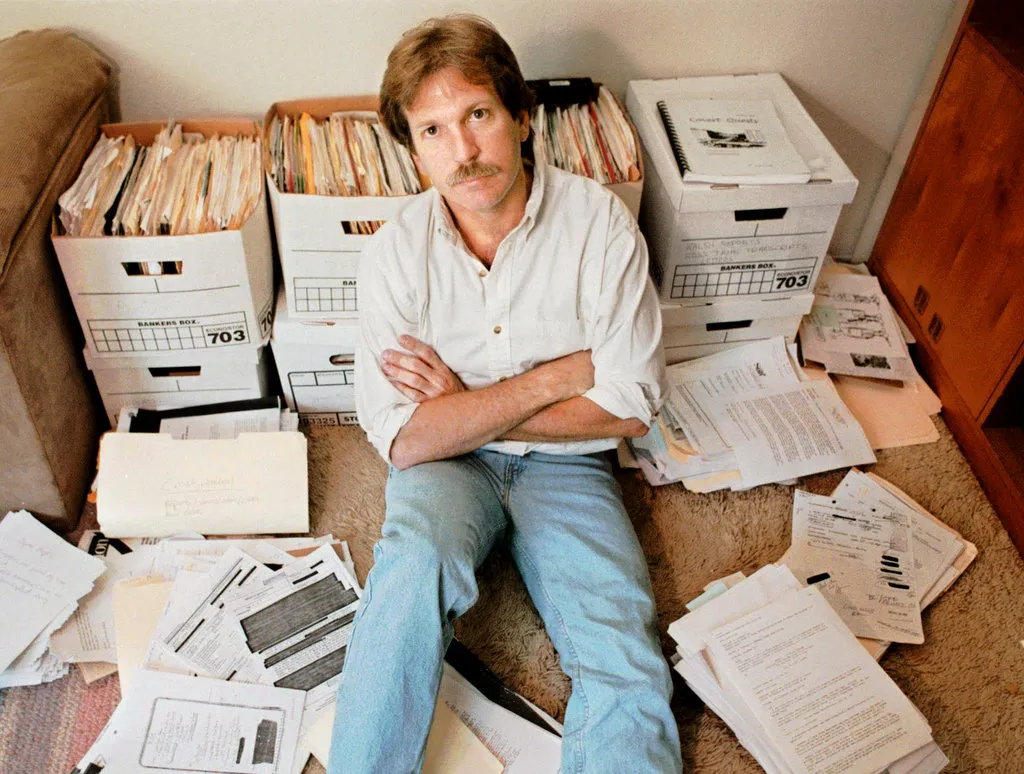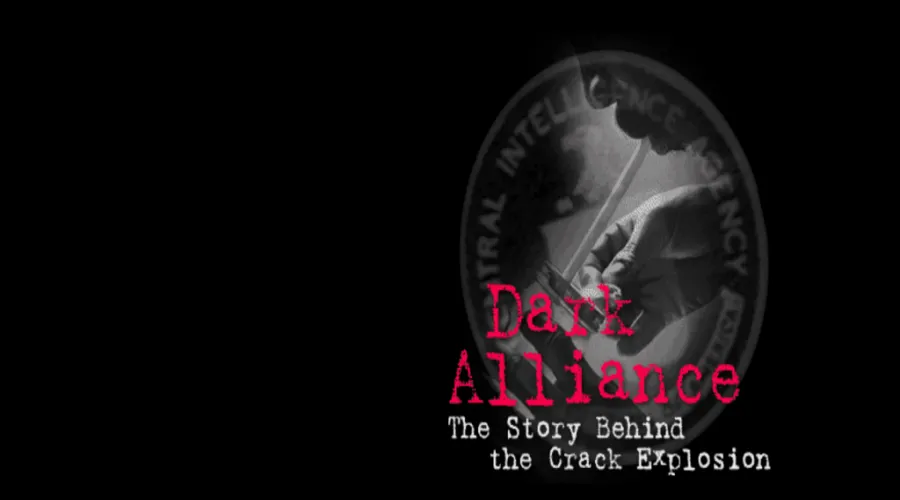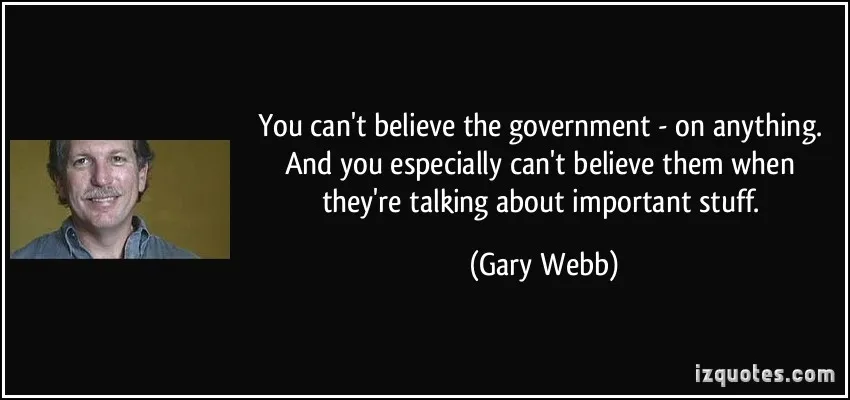
After spending three years of my life looking into this, I am more convinced than ever that the U.S. government's responsibility for the drug problems in South Central Los Angeles and other inner cities is greater than I ever wrote in the newspaper.
Source
I recently finished reading Gary Webb’s masterstroke, Dark Alliance.
Webb's explosive reporting on the origins of the crack 'epidemic' in Southern California in the early 1980s showed that the bulk of the cocaine influx came from a single source.
Dark Alliance presented a mountain of evidence confirming the CIA’s close involvement in cocaine distribution in America, and in South Central L.A. in particular. The cocaine proceeds were used to covertly finance and arm the CIA-backed Contra forces attempting to overthrow the government of Nicaragua.
The original publishing of his series of the same title in the San Jose Mercury News in August 1996 was a watershed moment for journalism.
Not only did the publishing of Webb’s reporting become a legendary piece of investigative work in the field of journalism but the way in which the story was told online was truly groundbreaking.
I’d known about the book for years but only recently got my hands on a copy.
Reading the book is a bitter sweet experience, as most readers known the tragic ending to the story.
In my opinion, this should be required reading for any investigative journalist. It’s a master class in research, journalistic integrity, dogged determinism and commitment to speaking truth to power.
Ultimately, Webb’s commitment to telling the truth about the USG, DEA, FBI and CIA resulted in Webb paying the ultimate price for his unflinching journalism, it cost him his career and eventually, it cost him his life.
Original Newspaper Series - Dark Alliance 1996
Dark Alliance: The Story Behind the Crack Explosion
Book Version - Dark Alliance 1999
Dark Alliance: The CIA, the Contras and the Crack Explosion
For anyone interested in learning more about Gary Webb, I highly recommend @corbettreport’s series - Requiem for the Suicided. Webb is featured in episode #117 titled: Requiem for the Suicided: Gary Webb

Trail Blazing
The Dark Alliance series was a veritable heavyweight one-two combination of investigative journalism coupled with technological distribution. Very few people grasped the significance of the San Jose Mercury News piece at that point in time and many still remain unaware of its lasting impact today.
Institutional news media outlets had successfully dismissed similar allegations about the CIA's illegal funding of Contra armies, such as the Fuerza Democrática Nicaragüense (FDN), for the better part of a decade. As is so often the case, this sort of reporting was labelled as 'conspiracy theories' with no basis in reality.
Yet, the Dark Alliance story, backed by US government documentation, would blow the lid off the secret CIA operation. The mainstream media had initially ignored the series and paid little or no attention to its publication. However, not long after publication the national media narrative controllers were caught flat-footed and were forced to cover Webb's investigation as it began to spread like wildfire across the United States.
This was unprecedented.
The explosive story about the CIA's involvement in international drug trafficking wasn't uncovered by a prestigious news media organization but by a little-known reporter from a regional newspaper in San Jose, California.
The entire story may have simply disappeared into obscurity but for one significant factor – the San Jose Mercury News website.
The Internet
The publishing of Dark Alliance to the San Jose Mercury News website was a watershed moment in the history of journalism.
The fact that the San Jose Mercury News was located in the heart of the American technological revolution in 1996 played a critical role in the phenomena unfolding around Gary Webb’s revelations.
The Mercury editors decided to put their state-of-the-art website to good use and published the investigative piece on the front page of their newspaper and uploaded the series to the World Wide Web in tandem on August 18th 1996.
Although the print version received little fanfare initially, it would gain moment as more and more people visited the newspaper’s website in the weeks and months that followed.
When the story was published, it coincided with the week separating both the Republican Democratic national conventions that traditionally dominate the news cycle. Meaning, that the majority of US government officials were focusing their attention on the leadership races. At the same time, major media institutions such as the New York Times, Washington Post and the LA Times paid no attention to the revelation of the true origins of the LA crack epidemic had roots in the Contra war Webb was exposing.
But then something unexpected happened.
Traffic on the San Jose Mercury News website began to erupt. People from across the country, and around the world, started visiting the website in droves. Enraged African American’s, in particular, rushed to log-in online to learn about the secret CIA network responsible for the crack epidemic that plagued their communities and neighbourhoods across the country. Some had never used the internet before the publishing of the series.
Reportedly, the website received 1 million hits per day at its peak, a feat that was unheard of in 1996.
New Media
At the request of Webb’s editors, the internet version of the story included an image of a user smoking crack cocaine superimposed over the CIA’s official seal, something that Webb was not enthusiastic about.
Despite his misgivings about the choice of imagery,Gary Webb himself was extremely impressed with the ‘eye popping’ job the Mercury’s website developer team had pulled off. As Webb wrote:
It was something right out of the movies: full color animated maps, one click access to uncut source documents, unpublished photos, audio clips from undercover DEA and Danilo Blandon's federal court testimony, a bibliography, a timeline, all in far more depth and detail than we were able to get in the newspaper.
For investigative reporting, the Web was a dream come true. No longer did the public have to rely on the word of sources or the reporter's version of what the documents meant, The Web made it possible to share your files directly with your readers. If they cared to, they could read and hear exactly what you had read and heard and make up their own minds about the story. It was raw interactive journalism, perhaps too interactive for some.
- Gary Webb "Dark Alliance" (1999)
Providing an interactive website version of the article to thousands of readers allowed for a higher degree of immersion in the story. Thus, bringing people that much closer to the investigation.
Almost overnight, the reach of a regional Californian newspaper grew exponentially. It was now possible to disseminate information with a scope few had thought possible. Dark Alliance helped to change the way that people obtained their news information at a fundamental level.

New York Times
Sourcing
More than any other factor that made the Dark Alliance series so impactful was the ability for readers to access, consider and assess the significance of the source material on their own.
Up until the late 90s, it wasn't possible to easily access source material without visiting a government building or a national library, to obtain certain documentation or any existing copies in the public domain. Certainly, it was a painstaking process that most citizens had little desire to perform. Sending away for copies of transcripts, making a FOIA request or receiving court documents were options in those days but could take months or even years to receive a response. Additional printing and shipping costs would also be incurred in many instances.
Furthermore, in the past investigative journalists were known to clam-up if asked to reveal their sources. Keeping sources secret was an essential element of a reporter's toolbox if one wanted to prevent another from 'out-scooping' or from having their story poached by a rival.
Even today, many mainstream outlets continue the practice of relying heavily on unnamed sources for their reporting. Terms such as: "senior Whitehouse officials", "sources close to the matter","anonymous government officials" or "experts believe" are as commonplace as they are meaningless. Dark Alliance helped change that. It upped the ante on both transparency and reliability throughout the industry.
Furthermore, the fact that source documents, unabridged, were made available to the viewing public was nothing short of a monumental. This shift towards the sharing of source material helped to pave-the-way for more transparent, open and credible reporting. It also allowed for a higher degree of verification and reliability.
These days, sharing sources goes without question. Embedding source material and links inside of one's reporting is now ubiquitous across platforms and has come to be considered an indispensable part of any significant piece of journalism.
Legend
I highly recommend Dark Alliance to all of my readers. It's a fascinating and often riveting account of the investigation by the author in his own words.
Gary Webb never got to experience his vindication, as he died of an alleged 'suicide' in 2004. After his death, much of what he had exposed would be further corroborated. I think he would be heartened to know his work has inspired researchers and journalists the world over.
He remains a veritable legend in investigative journalism and his influence over the field is undeniable.
Gary Webb - A True Hero of the People




